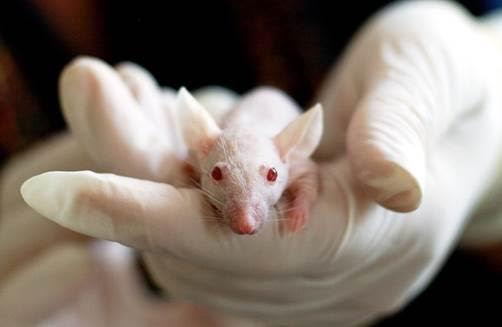The Haunting Truth Behind the Cosmetic Industry

Halloween is an exciting time for makeup artists looking to create a killer look, but just how deadly are your cosmetics?
The unfortunate truth is that animals may have died to test the eyeshadow or lip shade you’ve been wanting to try. Even today in what feels like an era when technology rules the day, animals are used to assess the safety of many cosmetics and personal care products.
An estimated 500,000 mice, guinea pigs, rats and rabbits suffer every year for experimental tests performed without pain relief. Animals used in testing endure skin, eye and oral tests (among others) where products are forced down their throats, rubbed into their sensitive eyes and onto exposed skin, which can leave them with painful, blistering lesions, redness, ulcers, scaling, inflammation, itchiness, diarrhea, convulsions, bleeding from the mouth, seizures, blindness and paralysis. The animals are often killed at the end of the tests.
Talk about frightening!
Although animal testing for finished cosmetic formulations is believed to occur only in China where pre-market testing on animals is a legal requirement for imported and special-use cosmetics, it’s still legal in 80 percent of countries. Animal testing may not be required in the United States, but that doesn’t mean that it doesn’t happen here.
Cosmetic companies in the United States continue to engage in animal testing to assess the safety of new ingredients. The reality is that experiments involving animals are completely unnecessary.
Alternatives that exclude animal subjects can combine human cell-based tests and sophisticated computer models to deliver human-relevant results in hours or days, unlike some animal tests that can take months or years. Non-animal alternatives are also typically much more cost-effective than tests that use animals.
The Humane Society of the United States and Humane Society International’s Be Cruelty Free campaign has helped to secure full or partial animal testing and/or trade bans in the 28 countries of the European Union, Guatemala, India, Israel, New Zealand, Norway, South Korea, Switzerland, Taiwan and Turkey, and is campaigning in the United States, Canada, Brazil, Australia and elsewhere, for similar reform.
Before you go crazy purchasing products at random to create that awesome zombie, vampire or werewolf look, keep an eye out for the Leaping Bunny logo. If you can’t find it or you’re not sure about a product, check out the Leaping Bunny guide, which can be found online or through the Leaping Bunny app. The guide provides a list of more than 1,000 cruelty-free cosmetic, personal care and household product brands that have committed to eliminating animal testing from their products, formulations and ingredients. It’s easy to get hyped about hot new products and rush into purchases, but it’s our responsibility as consumers to do the research first — and the extra time set aside is worth it.
Avoid purchasing products from companies like L’Oréal that sell products in China, where animal testing is required, and urge them to support efforts to end cosmetic animal testing. Urge your lawmakers to support the Humane Cosmetics Act, which would end cosmetics testing on animals in the U.S. and ban the import of animal-tested cosmetics, and donate to help the cause.
That’s how you can be scary beautiful not just on the outside, but on the inside, too.
Viktoria-Leigh Wagner is a Public Relations Intern with The Humane Society of the United States.
About Sunny (Sunny's Profile)
Longtime vegan, hardcore compassionate beauty junkie, serious cake aficionado, and lover of all things floofy and sparkly! If there's something in particular you'd like me to review, drop me a line at Sunny@VeganBeautyReview.com. You can also find me on Facebook, Instagram, Twitter, YouTube, and Google +.Filed in: Vegan news








